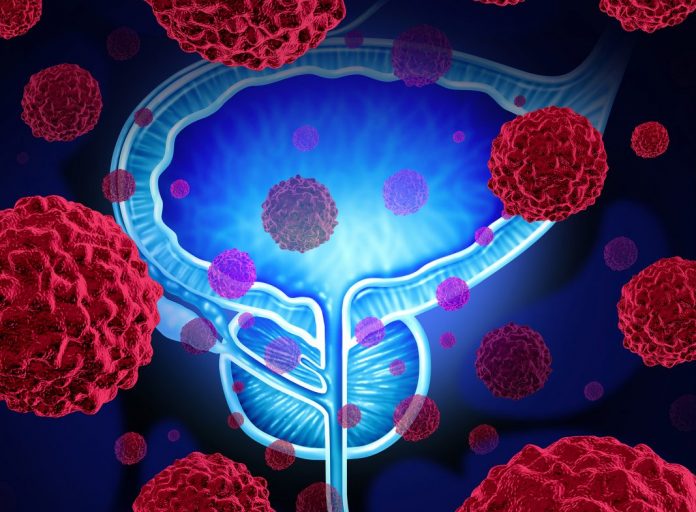
Researchers at Moffitt Cancer Center report they have discovered a mechanism by which prostate cancer cells become resistant through molecular modification of the androgen receptor protein and identified a potential treatment approach that could overcome this resistance in mice.
Their findings are published in the journal Science Translational Medicine in a paper titled, “Chronologically modified androgen receptor in recurrent castration-resistant prostate cancer and its therapeutic targeting.”
“Resistance to second-generation androgen receptor (AR) antagonists such as enzalutamide is an inevitable consequence in patients with castration-resistant prostate cancer (CRPC),” wrote the researchers. “There are no effective therapeutic options for this recurrent disease. The expression of truncated AR variant 7 (AR-V7) has been suggested to be one mechanism of resistance; however, its low frequency in patients with CRPC does not explain the almost universal acquisition of resistance. We noted that the ability of AR to translocate to the nucleus in an enzalutamide-rich environment opens up the possibility of a posttranslational modification in AR that is refractory to enzalutamide binding.”
Moffitt researchers, in collaboration with scientists at Washington University in St. Louis, wanted to identify alternative resistance mechanisms to enzalutamide and abiraterone in prostate cancer patients. They performed a series of laboratory experiments focused on the molecular modifications of the androgen receptor and its interactions with other proteins and DNA. They discovered that the androgen receptor becomes chemically modified at two distinct sites.
First, a phosphate group is added to the androgen receptor protein by a protein called ACK1. This chemical modification permits a second modification, during which an acetyl chemical group is added. These combined events result in a feedback loop during which the androgen receptor further increases levels of itself, as well as the ACK1 protein.
The researchers confirmed the importance of these molecular modifications in mouse experiments. They demonstrated that treatment of enzalutamide/abiraterone-resistant prostate tumors in mice with a Moffitt-designed ACK1 inhibitor called (R)-9b that targets ACK1 suppressed tumor growth, and reduced expression levels of ACK1, the androgen receptor and additional key genes regulated by the androgen receptor. Importantly, the researchers also showed that the expression level of ACK1 and the modified androgen receptor were higher in tissue samples from patients with prostate cancer than normal prostate tissue, and their expression increased throughout cancer progression.
“These combined observations suggest the importance of these androgen receptor modification events and protein interactions to the development of castration-resistant prostate cancer,” said Nicholas Lawrence, PhD, study co-author and senior member of the drug discovery department.
“Identification of an ACK1 kinase inhibitor that has the ability to thwart both the modifications, and the fact that an ACK1 inhibitor has not yet advanced to clinical trials, these data could open a new therapeutic modality for recurrent castration-resistant prostate cancer patients, a currently unfulfilled need,” added Harshani Lawrence, PhD, study co-author and scientific director of chemical biology.













